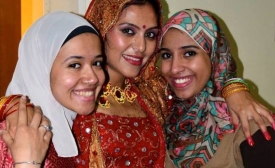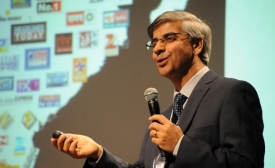bollywood
As Narendra Modi heads to Brazil for the BRICS Summit, Team Niti Central takes a look at India’s Soft Power in Latin America – the incredible popularity of Bollywood. A distant memory of a shared colonial past and a demographic dividend hungry for unbounded economic aspirations are not the only unifying factors between India and Latin America. India’s film industry is hugely popular in the region and has gone places where direct Indian diplomacy is perhaps yet to venture.
India’s foreign policy establishment, which counts Bollywood as a key aide in spreading the nation’s footprint globally, is readying to pay the film industry back — literally — to stave off embarrassing jibes and potential litigation. The foreign ministry is purchasing the rights for India’s embassies and consulates to screen 25 popular Bollywood films after some diplomats, including at least two foreign envoys, pointed out that the legality of screenings by missions at present is dubious.

How an annual Indian festival is forging permanent friendships in Egypt.
India's national election, which wrapped up this week, has divided Bollywood along political lines more sharply than any other race in years. In the past month, Bollywood stars have taken to public forums and Twitter to show support for their preferred candidates or criticize their opponents.
India is planning a year-long soft power push in more than a dozen Chinese cities by bringing classical dance troupes, Indian food festivals, first ever Bollywood events in China and even a social media campaign in an attempt to raise the country’s cultural profile, especially among younger Chinese. “The effort will be India’s biggest ever attempt to reach out directly to the Chinese public,” Ambassador to China Ashok Kantha, who took over as the envoy here in January, told The Hindu.

In this podcast, Master of Public Diplomacy candidate Bryony Inge interviews Dr. Daya Thussu, international communication professor at the University of Westminster in London.
A new exhibition at the National Museum of Natural History in Washington celebrates Indian-American culture, history and experiences, as Diksha Basu reports. When you enter Beyond Bollywood: Indian Americans Shape the Nation, you are greeted by loud Hindi film music and a vinyl record from Mughal-E-Azam, one of the most iconic Bollywood films.
It was a dinner conversation that got me thinking about elephants. I was speaking with Rachel Dwyer, a professor at the School of Oriental and African Studies at the University of London, and she was telling me about her research. She studies elephants in Bollywood movies. “The definitive film for elephants in Indian cinema has to be ‘Haathi Mere Saathi,’ made in 1971” she says. “It was the biggest [Bollywood] hit up to that point.”







